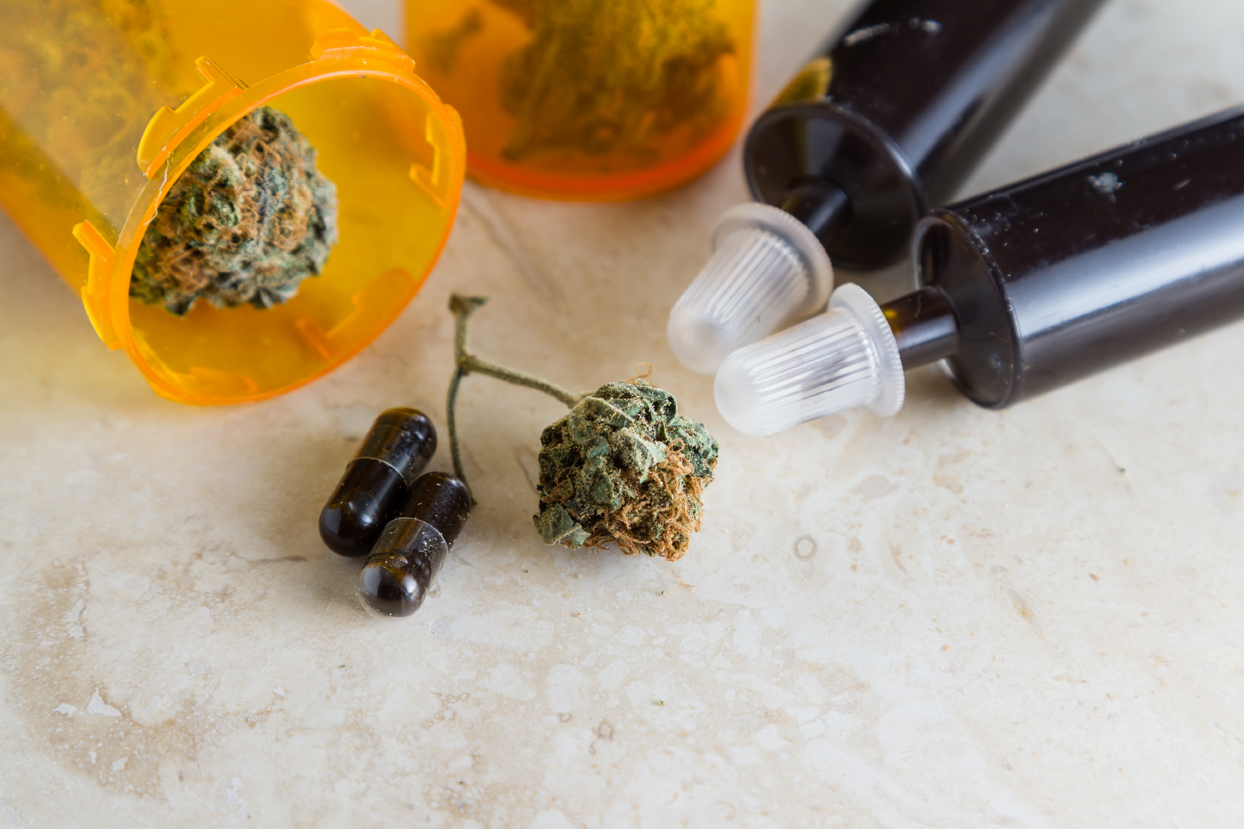An Introduction to Cannabis’s Role as an Emerging Therapeutic Agent
With cannabis becoming increasingly mainstream in modern culture, its population is becoming aware of its use for a number of purported medical reasons ranging from skin ailments to digestive issues and pain. California has recently allowed its recreational use. Today, the industry is still nascent with a market of ill-vetted products with equally nascent scientific claims. However, cannabis may be unique in its application to holistic care as mediated by the endocannabinoid system and thus it is prudent to know what is useful and what isn’t.

The history of cannabis use is ancient and has resulted in many breeds of cannabis which differ in the phytocannabinoid content, ratio and terpene profile. Cannabinoids are molecules that act on cannabinoid receptors that comprise the endocannabinoid system. The endocannabinoid system modulates the psychological stress, emotionality and inflammation responses. CB1 and CB2 are examples of receptors within this system whose span is diverse, for example, they are found in the brain, gut and persist in osteoarthritic cartilage despite degradation grade. Interaction with these receptors can occur through phytocannabinoids; each of which has differing effects. To complicate matters, phytocannabinoids influence the effects of one another. Furthermore, the method of delivery also influences the effects; for example, ingestion allows the liver time to process phytocannabinoids into its derivatives which have their own effects.
Tetrahydrocannabinol (THC) and cannabidiol (CBD) are two well-known examples of phytocannabinoids. THC has claims to work as an analgesic, antiemetic and antispastic; although, adverse effects include paranoia, lethargy, and tachycardia. THC can also induce euphoria which may play a role in how the analgesic properties work. CBD has claims to work as an anti-inflammatory, antiepileptic and works to block the binding of THC to CB1 and CB2 receptors. The interplay that cannabinoids have on one another has led to the notion of the “entourage effect.” (The idea that cannabis plant as a whole has curative effects.) Pharmacologically speaking, only a combination of THC and CBD, in a 1:1 formulation, manufactured by G.W. Pharmaceuticals has been vetted for its medical claims.
From oils and tinctures to hash and kush, the recreational market has driven into existence a myriad of products with a myriad of claims akin to the early days of the dietary supplement market. Assuming the source comes from one that complies with the current regulation, medical cannabis falls into three categories: plant, processed and formulations. Plant products refer to cannabis products in which the cannabinoids have not been altered and removed from the cannabis plant. These products use no heat or chemicals in their preparation and include: buds, keef, hash.
Processed products apply heat or chemicals to the cannabis plant in order to remove desired terpenes and cannabinoids. Processed products include oils, tinctures, e-juice, etc. and can be assumed to contain a higher percentage of cannabinoids in natural and unnatural ratios. Formulations are processed products whose consistency in manufacturing and medical claims have been vetted by the FDA. Formulations include products like Sativex and Epidiolex. Of course, marketing practices blurs the usage of terms; therefore, it is incumbent of the self to understand the product.
Jakub Pritz, Ph.D. has been working in the cannabis industry since 2015 as a separation operator and consultant for the production of recreational cannabis oils and other cannabis-related products. He can attest to current cannabis production methods and what the person should be aware of. His interest is to create botanical extracts of cannabis to be delivered in differing modalities depending on the effects sought and data affirmation. For example dosage control in inhalation for acute pain relief, transdermal applications for arthritic pain and oral methods for digestive symptoms. Patrons should be aware of the euphoric effects of THC and the interactions cannabinoids have with one another in varying ratios.
Prior to this, Jakub held a post-doctoral position at UCSD’s Moore’s Cancer Center where he was in charge of data management and accruing international radiation oncology centers to join the International Evaluation of Radiotherapy Technology Effectiveness in Cervical Cancer (INTERTECC). This trial required the coordination of several centers to follow strict data collection standards, quality checking of the institution capabilities and implementation of plan protocol. He received his Ph.D. in Applied Physics (concentration in Medical Physics) from the University of South Florida in 2011.
As an athlete, Jakub competed in the Patriot League as a swimmer, setting records along the way. During his graduate school years at the University of South Florida, he participated in, coached and competed with their water polo club.

